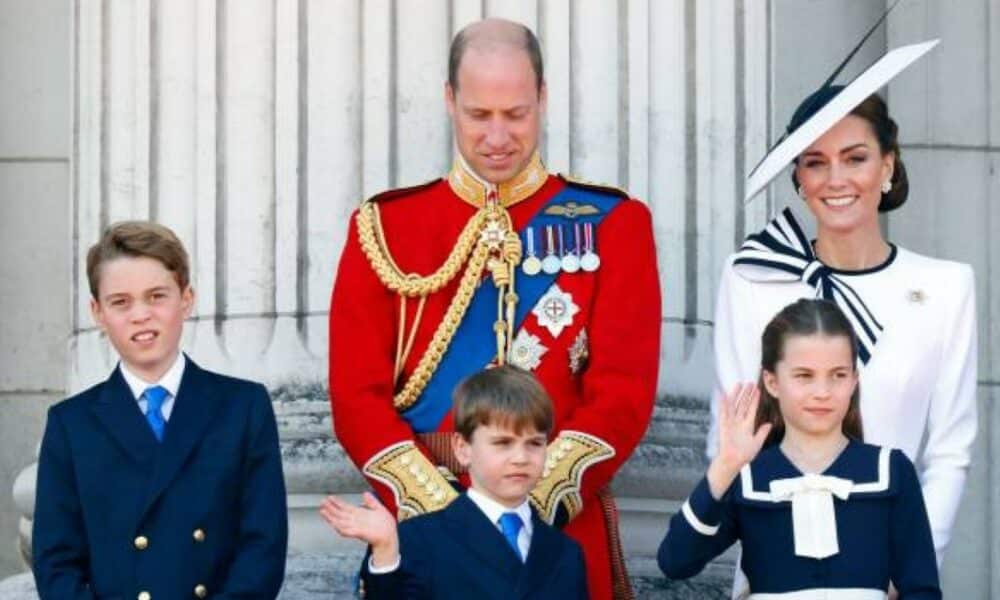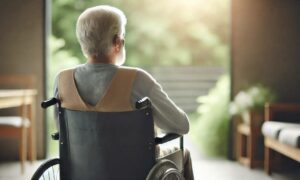Priorities, Family, and Modern Challenges
Since joining the British royal family on April 29, 2011, through her marriage to Prince William, Kate Middleton has become a central figure in the monarchy’s public and private life. However, new details revealed by author Robert Jobson in his book Catherine, The Princess of Wales shed light on lesser-known aspects of her entry into the royal circle. Notably, Kate established clear terms before taking on the role, emphasizing her family’s priority and rejecting imposed royal duties.
Kate’s decision to impose these terms reflects her strong personality and her determination to retain her identity while embracing the responsibilities of a future queen consort. At the time, these terms were presented to Queen Elizabeth II and then-Prince Charles, now King Charles III. While unconventional, her demands underscored her commitment to balancing public duties with personal principles.
Kate’s stance set a unique precedent by negotiating her position within the royal family. She emphasized that family would always come first, even over political or traditional matters. This approach stood in contrast to the monarchy’s historical rigidity, where roles were often pre-determined, and expectations firmly entrenched.
A remarkable journey to the British throne
Kate and William’s relationship began in 2001 at the University of St. Andrews in Scotland. After years of dating and a brief breakup in 2007, the couple announced their engagement in 2010. During their courtship, Kate faced intense media scrutiny, earning the nickname “Waity Katie” due to William’s delay in proposing—a reflection of the pressure surrounding her future role as a royal.
Their 2011 wedding at Westminster Abbey drew millions of viewers worldwide and marked the beginning of a new era for the royal family. Behind the grandeur of the ceremony, however, Kate had already secured agreements ensuring her ability to prioritize her family and assert control over her role. Her refusal to accept predefined duties marked a departure from traditional expectations of women in the monarchy.
The terms set by Kate Middleton
Before officially joining the royal family, Kate presented the following conditions:
- Family as a priority: Kate insisted her family and children would always take precedence over political or ceremonial matters.
- Rejection of imposed roles: She made it clear she would not accept responsibilities without prior consultation or alignment with her values.
- Autonomy in family decisions: Kate emphasized the need to raise her children with greater freedom from traditional royal constraints.
These terms were accepted by Queen Elizabeth II and Prince Charles, signaling a willingness within the monarchy to modernize and adapt to evolving societal expectations.
The challenges of a modern princess
Since assuming the title of Princess of Wales, Kate has expertly balanced public demands with raising her three children: George, Charlotte, and Louis. She has become a vocal advocate for mental health awareness, early childhood education, and family well-being. Simultaneously, she remains a steadfast presence at royal engagements, reinforcing her role as a future queen consort alongside Prince William.
This dual role presents significant challenges. Kate strives to shield her family’s private life from relentless media scrutiny while fulfilling her public responsibilities. Her practical, composed approach has endeared her to the public, solidifying her as one of the most admired members of the royal family.
Redefining royal motherhood
One of the most defining aspects of Kate’s royal journey is her modern approach to motherhood. She emphasizes the importance of a healthy, emotionally balanced childhood and actively participates in initiatives that support mental health for children.
Her parenting philosophy incorporates traditional values alongside modern practices, such as outdoor activities and exposing her children to less formal settings. This progressive approach contrasts sharply with the restrictive upbringing typically associated with royal children.
Notable public moments for Kate Middleton
Kate Middleton has been a prominent figure in key royal events and ceremonies since becoming Princess of Wales. Some of her most significant moments include:
- Platinum Jubilee of Queen Elizabeth II (2022): Kate played a central role in celebrating this historic occasion, showcasing her growing influence within the family.
- Launch of educational initiatives: Through her foundation, Kate champions programs aimed at improving children’s mental health and emotional well-being.
- Environmental advocacy: She works alongside Prince William to promote sustainability and environmental responsibility, highlighting the couple’s progressive leadership within the monarchy.
The impact of Robert Jobson’s revelations
The insights shared by Robert Jobson highlight Kate’s assertiveness and determination. By negotiating terms before joining the royal family, she modernized royal traditions and set a precedent for greater flexibility and autonomy. Her approach resonates with contemporary values of equality and empowerment.
Furthermore, Jobson’s revelations underline Kate’s ability to balance tradition with modernity. Her blend of elegance, intelligence, and pragmatism makes her a role model for future generations within and beyond the monarchy.
Preparing the next generation of royals
With their three children, Kate and William are paving the way for a new era in the British monarchy. George, the eldest, is first in line to the throne after William, followed by Charlotte and Louis. Kate’s practical approach to parenting, blending royal duties with normalcy, is often praised as a model for raising well-rounded individuals in the spotlight.
Kate Middleton’s enduring legacy
As the British monarchy evolves, Kate Middleton’s influence is unmistakable. Her insistence on establishing terms for her role set a precedent for a more modern and adaptable monarchy. Her dedication to social causes and her ability to navigate multiple responsibilities have cemented her position as an inspirational figure both within and outside the United Kingdom.
Join us this week as we announce the results from the 5 Big Questions survey, reveal the #5BigInsights, and take your questions.
This is just the beginning… pic.twitter.com/lKegCA0x2Z
— The Prince and Princess of Wales (@KensingtonRoyal) November 23, 2020

Since joining the British royal family on April 29, 2011, through her marriage to Prince William, Kate Middleton has become a central figure in the monarchy’s public and private life. However, new details revealed by author Robert Jobson in his book Catherine, The Princess of Wales shed light on lesser-known aspects of her entry into the royal circle. Notably, Kate established clear terms before taking on the role, emphasizing her family’s priority and rejecting imposed royal duties.
Kate’s decision to impose these terms reflects her strong personality and her determination to retain her identity while embracing the responsibilities of a future queen consort. At the time, these terms were presented to Queen Elizabeth II and then-Prince Charles, now King Charles III. While unconventional, her demands underscored her commitment to balancing public duties with personal principles.
Kate’s stance set a unique precedent by negotiating her position within the royal family. She emphasized that family would always come first, even over political or traditional matters. This approach stood in contrast to the monarchy’s historical rigidity, where roles were often pre-determined, and expectations firmly entrenched.
A remarkable journey to the British throne
Kate and William’s relationship began in 2001 at the University of St. Andrews in Scotland. After years of dating and a brief breakup in 2007, the couple announced their engagement in 2010. During their courtship, Kate faced intense media scrutiny, earning the nickname “Waity Katie” due to William’s delay in proposing—a reflection of the pressure surrounding her future role as a royal.
Their 2011 wedding at Westminster Abbey drew millions of viewers worldwide and marked the beginning of a new era for the royal family. Behind the grandeur of the ceremony, however, Kate had already secured agreements ensuring her ability to prioritize her family and assert control over her role. Her refusal to accept predefined duties marked a departure from traditional expectations of women in the monarchy.
The terms set by Kate Middleton
Before officially joining the royal family, Kate presented the following conditions:
- Family as a priority: Kate insisted her family and children would always take precedence over political or ceremonial matters.
- Rejection of imposed roles: She made it clear she would not accept responsibilities without prior consultation or alignment with her values.
- Autonomy in family decisions: Kate emphasized the need to raise her children with greater freedom from traditional royal constraints.
These terms were accepted by Queen Elizabeth II and Prince Charles, signaling a willingness within the monarchy to modernize and adapt to evolving societal expectations.
The challenges of a modern princess
Since assuming the title of Princess of Wales, Kate has expertly balanced public demands with raising her three children: George, Charlotte, and Louis. She has become a vocal advocate for mental health awareness, early childhood education, and family well-being. Simultaneously, she remains a steadfast presence at royal engagements, reinforcing her role as a future queen consort alongside Prince William.
This dual role presents significant challenges. Kate strives to shield her family’s private life from relentless media scrutiny while fulfilling her public responsibilities. Her practical, composed approach has endeared her to the public, solidifying her as one of the most admired members of the royal family.
Redefining royal motherhood
One of the most defining aspects of Kate’s royal journey is her modern approach to motherhood. She emphasizes the importance of a healthy, emotionally balanced childhood and actively participates in initiatives that support mental health for children.
Her parenting philosophy incorporates traditional values alongside modern practices, such as outdoor activities and exposing her children to less formal settings. This progressive approach contrasts sharply with the restrictive upbringing typically associated with royal children.
Notable public moments for Kate Middleton
Kate Middleton has been a prominent figure in key royal events and ceremonies since becoming Princess of Wales. Some of her most significant moments include:
- Platinum Jubilee of Queen Elizabeth II (2022): Kate played a central role in celebrating this historic occasion, showcasing her growing influence within the family.
- Launch of educational initiatives: Through her foundation, Kate champions programs aimed at improving children’s mental health and emotional well-being.
- Environmental advocacy: She works alongside Prince William to promote sustainability and environmental responsibility, highlighting the couple’s progressive leadership within the monarchy.
The impact of Robert Jobson’s revelations
The insights shared by Robert Jobson highlight Kate’s assertiveness and determination. By negotiating terms before joining the royal family, she modernized royal traditions and set a precedent for greater flexibility and autonomy. Her approach resonates with contemporary values of equality and empowerment.
Furthermore, Jobson’s revelations underline Kate’s ability to balance tradition with modernity. Her blend of elegance, intelligence, and pragmatism makes her a role model for future generations within and beyond the monarchy.
Preparing the next generation of royals
With their three children, Kate and William are paving the way for a new era in the British monarchy. George, the eldest, is first in line to the throne after William, followed by Charlotte and Louis. Kate’s practical approach to parenting, blending royal duties with normalcy, is often praised as a model for raising well-rounded individuals in the spotlight.
Kate Middleton’s enduring legacy
As the British monarchy evolves, Kate Middleton’s influence is unmistakable. Her insistence on establishing terms for her role set a precedent for a more modern and adaptable monarchy. Her dedication to social causes and her ability to navigate multiple responsibilities have cemented her position as an inspirational figure both within and outside the United Kingdom.
Join us this week as we announce the results from the 5 Big Questions survey, reveal the #5BigInsights, and take your questions.
This is just the beginning… pic.twitter.com/lKegCA0x2Z
— The Prince and Princess of Wales (@KensingtonRoyal) November 23, 2020











Post Comment